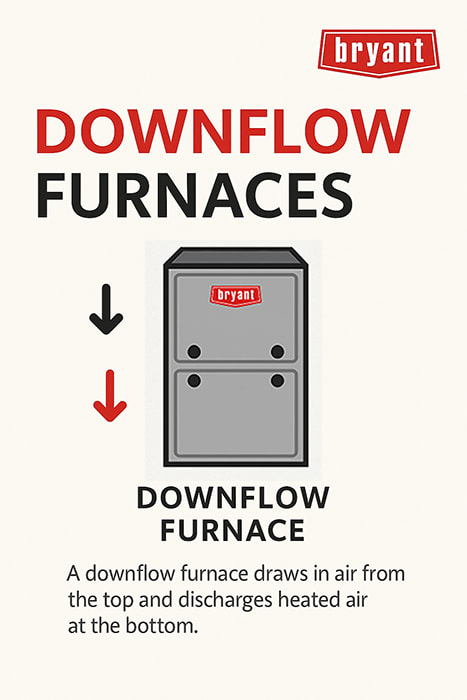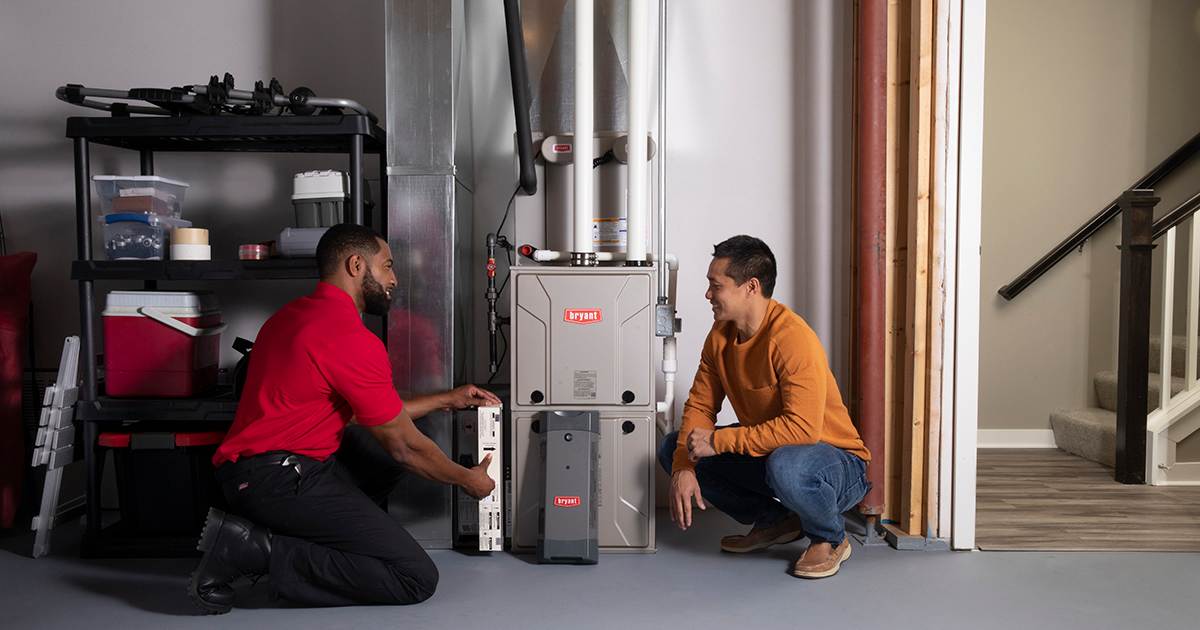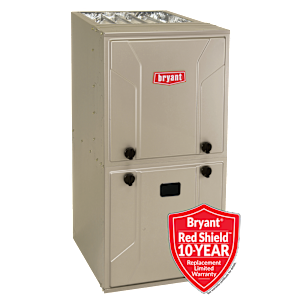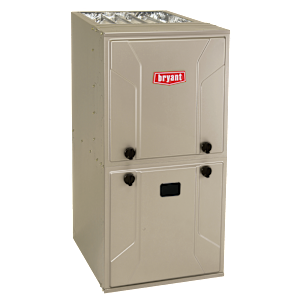About The Author: Travis Baugh is a Digital Brand Marketing Manager for Bryant, where he creates clear, helpful content to guide homeowners through heating, cooling, and indoor air quality decisions. His goal is to empower readers with the knowledge they need to choose the right comfort solutions for their home—confidently and comfortably.
Understanding Downflow Furnaces: A Complete Guide
Welcome to our detailed exploration of downflow furnaces, where we uncover the functionality and advantages of these effective heating systems. Known for their ability to distribute warmth efficiently, a down flow furnace is favored in many homes. This guide will explain their operation, offer installation and maintenance advice, and highlight the energy efficiency they provide.
How Downflow Furnaces Function

Downflow furnaces are engineered to channel heated air downward into living spaces, promoting efficient airflow that ensures even heating throughout a home. In this system, the downflow gas furnace draws in cool air, heats it using a heat exchanger, and then directs the warm air downwards through ducts, ideally suited for homes with basements or multiple levels. This design helps maintain consistent temperatures and minimizes cold spots. Learn more about how a furnace works.
Key components of a down flow furnace include the blower motor, heat exchanger, and ductwork. The blower motor circulates air, while the heat exchanger warms it before it enters the duct system. Modern downflow furnaces often come equipped with features like variable-speed blowers and smart thermostats, enhancing both efficiency and comfort by adjusting to specific heating needs.
Besides efficient heating, downflow systems contribute to improved indoor air quality. They recycle air from living spaces, helping reduce dust and allergens.
Installation and Maintenance Guidance for Downflow Furnaces
Downflow Furnace Installation
Successful installation of a down flow furnace involves careful planning. Your local Bryant dealer will choose a location that supports good airflow with easy maintenance access. They will position the furnace on a stable surface, secure it properly, connect the ductwork with precision to prevent air leaks, and install the gas line or electrical connections following local codes. Then, they will ensure proper venting for safe combustion gas expulsion and conduct a thorough inspection before testing the system to complete the furnace installation process.
Downflow Furnace Maintenance
Regular furnace maintenance is crucial for optimal downflow gas furnace performance. Replace the furnace filter every 1-3 months to maintain air quality and efficiency and optimize your thermostat settings to properly manage energy use. Additionally, schedule annual furnace inspections with your local Bryant dealer to detect wear and tear. They can perform a thorough furnace cleaning of components like the blower and heat exchanger to prevent dust buildup in addition to identifying any other issues with your furnace.
Downflow Furnace Troubleshooting
Common issues may occur despite diligent maintenance of your downflow furnace. Unusual noises could signal loose furnace parts or debris in the blower. Check the pilot light, relighting it as per the manufacturer's instructions if necessary. Inadequate heating may require inspection of the air filter and ductwork for obstructions. Persistent problems warrant consulting a Bryant professional for expert resolution.
Energy Efficiency and Cost Advantages of Downflow Furnaces
Understanding the Annual Fuel Utilization Efficiency (AFUE) rating is vital when evaluating a down flow furnace for energy savings. The AFUE rating reflects a furnace's efficiency in converting fuel to heat annually. Higher AFUE ratings mean better efficiency, providing warmth while helping reduce energy expenses. Many of Bryant's downflow gas furnaces boast impressive AFUE ratings, ensuring comfort without high costs.
Downflow furnaces can excel in energy efficiency compared to other heating systems. By directing heat downward, a downflow furnace effectively utilizes thermal dynamics for comprehensive heat distribution. This design not only enhances comfort but can help reduce energy consumption, which may result in a potential savings on heating bills.
Investing in energy-efficient furnaces might qualify homeowners for rebates as many utility companies offer financial benefits to promote energy-efficient appliances, including downflow furnaces.

Connect With A Bryant Dealer On The Best Downflow Furnace For Your Home
Connect with a Bryant dealer to find the best downflow furnace for your home’s unique layout and comfort needs. Downflow furnaces are ideal for homes with ductwork located below the main living space, such as in basements or crawlspaces. A Bryant expert can recommend the right model, ensure proper sizing, and provide professional installation for optimal performance and efficiency. Schedule an appointment for furnace replacement today.
Explore Bryant Furnaces
Choose a Bryant furnace for reliable, efficient heating that keeps your home comfortable throughout the winter. Known for their durability and advanced technology, Bryant high efficiency furnaces offer quiet operation, precise temperature control, and energy-saving features like variable-speed motors and 2-stage heating. With a range of models to suit different home sizes and needs, Bryant furnaces are built to last and come with industry-leading warranties, providing peace of mind and long-term value for your home heating system.
Learn More About Furnaces
- Learn how much is a new furnace
- Read our guide to furnace service
- Explore what is a furnace
- Find out how long does a furnace last
- Explore types of furnaces
- Understand the ins and outs of a furnace tune-up





